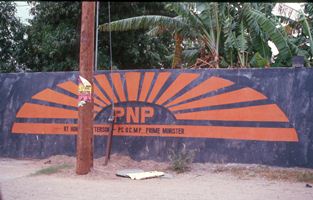Garrison Community

The increasing numbers of urban poor and the need to secure their vote made housing an area both of genuine social concern and political potential. The Garrison community is the architectural type created by that process. The geometries of movement, settlement and social friction were redrawn according the political poles within a neighbourhood. Low income housing schemes, sometimes given cynical nicknames like Angola, or Pegasus, were populated through covert systems of political patronage by people willing to declare their loyalty to a particular party. It is important to note that this system was, and probably still is part of the grass root level of politics where small doses of administrative power are effective personal weapons within the war for scarce benefits and spoils perpetuated by political tribes. The resulting political “homogenisation” of an area duly resulted in the geographical polarisation of communities into garrisons, areas overtly defined by their political allegiance.






